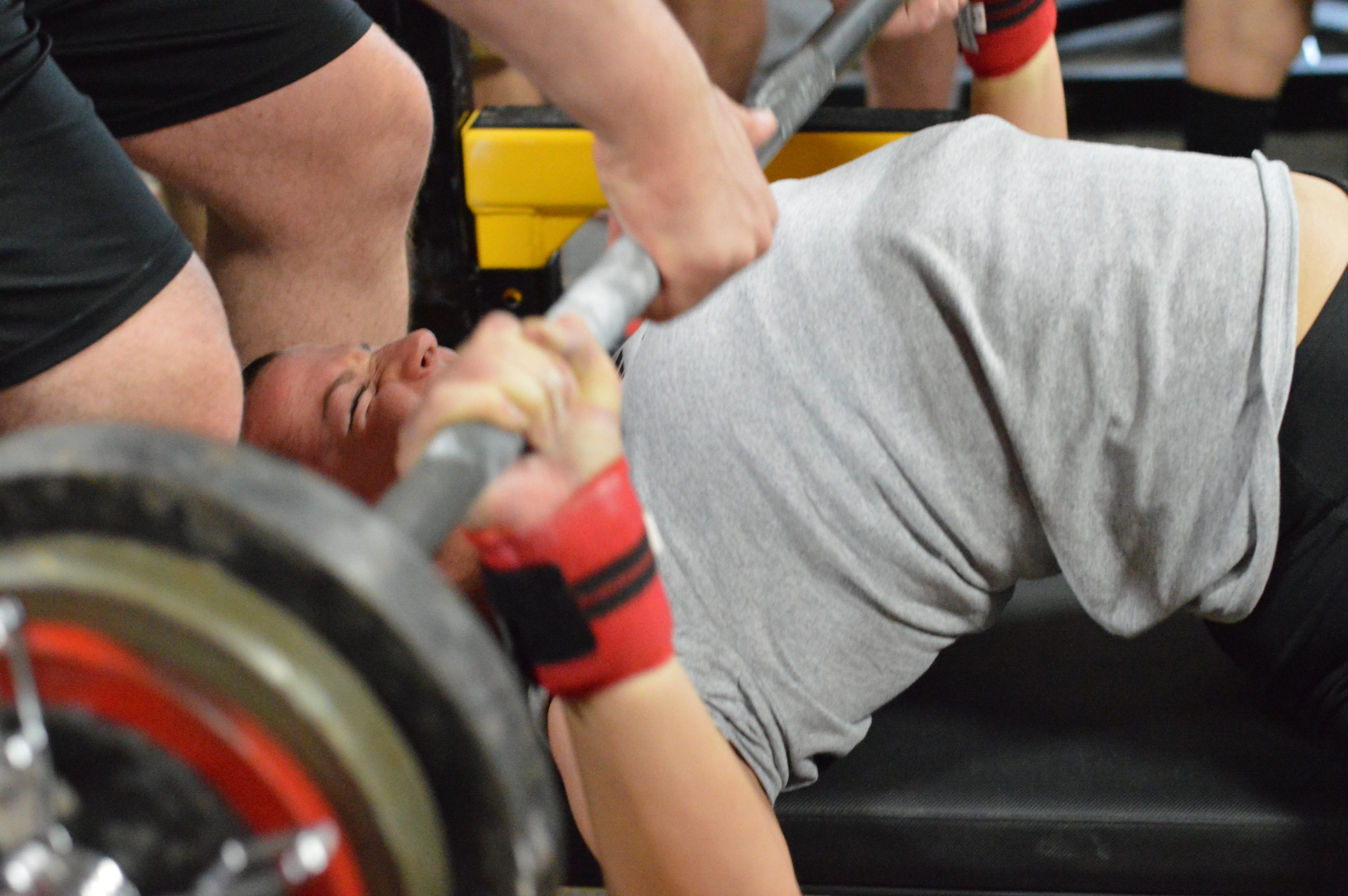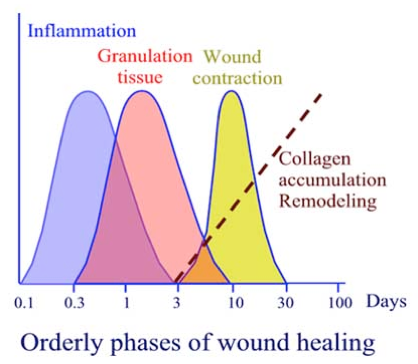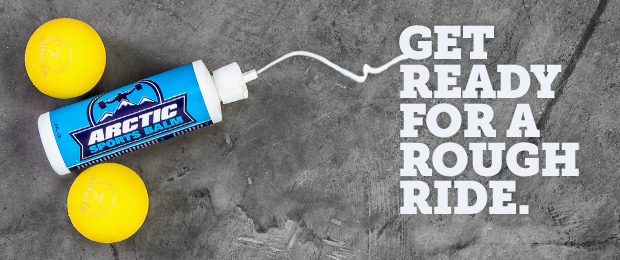
In life, no matter what, there are things we can't account for. The best planned training program coupled with nearly perfect nutrition still is subject to unexplained accidents and that is exactly what happened to me. I was in my 10th week of one of the best designed training programs I've ever partaken in. Week after week, I had hit PRs and I was zeroing in on my goal of competing in a powerlifting competition. It happened on my final set of max effort bench day: one board press.
Before the ill-fated attempt, I had just smoked a weight 15 pounds lighter. It had come up as if there were no weight on the bar. I felt strong, focused and ready as I loaded up what would have been my all-time best on that lift. It was about a five-percent jump, nothing crazy. The bar came down under control and as I drove it back up, I felt the back of my left arm tighten up. Like a bed sheet ripping, I tore my left triceps.
The first thing I felt was disappointment for not getting the lift, followed by pain, followed by a determination that I was not going to let this hold me back. I had torn my right triceps two years ago and recovered from it in about eight weeks. I was going to make it my mission to recover from this one in less time. To do this, I knew I would need to look into new recovery modalities in addition to what I had done before. In my research, I began to read about regenerative medicine and my search for a local doctor led me to Dr. Parikh.
My previous protocol coupled with his expertise and treatments made my goal possible and within six short weeks I was back to doing what I love with no restrictions. Dr. Parikh has a fascinating approach to medicine and treatment and I hoped perhaps some of the readers dealing with ongoing or acute injuries may benefit from his wisdom that he shared with me in the following interview.
Anthony Castore: Dr. Parikh, please tell me a little bit about yourself. Where did you go to school? How did you get interested in regenerative medicine?
Dr. Parikh: My journey into health and wellness started with Osteopathic Medical school in New York where I learned about the power of manual medicine. Then my training led me to Houston where I helped patients recover from brain and spinal cord injuries, further showing me the power of the body to heal. My intro into Regenerative Medicine was with my fellowship training. My late mentor, Dr. Jeff Ericksen showed me how Regenerative Medicine techniques such as Prolotherapy and Platelet Rich Plasma(PRP) injections can help people not only recover for injuries, but also heal from chronic pain.
AC: What are the different types of regenerative medicine?
DP: There are many forms of regenerative medicine such as taking supplements and vitamins. However, the unique treatments that have so interested me are Prolotherapy and Platelet Rich plasma injections.
AC: How does prolotherapy work?
DP: The basis of regenerative medicine is about understanding the inflammatory cascade and our views about inflammation. For so long, in medicine, we have viewed inflammatory as a bad thing, but in fact it is the first step in HEALING! Lets look at this graph:

It shows that once an injury occurs, the body triggers the inflammatory cascade. First there is inflammatory, which triggers chemical mediators to increase blood flow to the area and bring growth factors and granulation tissue to help clear up the injured cells. Then, it works to build new tissue which happens over months and months.
Prolotherapy involves injecting a substance onto those injured tissues to start the inflammatory cascade.
AC: How does PRP work?
DP: PRP involves taking your own blood and spinning it down in a centrifuge to concentrate the platelets in your blood which has numerous growth factors. So not only does PRP stimulate the inflammatory cascade, it also has numerous growth factors already there ready to attack the injured tissue and help it to heal.
AC: How is prolotherapy different from normal inflammatory response?
DP: Many chronically injured tissue has likely only partially gone through the inflammatory cascade for a multitude of reasons such as taking anti-inflammatory medications. What we do with Prolotherapy and PRP injections is we restart the inflammatory process to jump start healing. And this time, we make sure not to taking anti-inflammatory meds and to have a good diet and take supplements as needed to help the process along.
AC: What are some of the injuries that this can treat?
DP: There are so many injuries that can be aided by these treatments. Acute sprains and strains, muscle tears because most muscles don’t tear without some disruption of the tendon. Even arthritis and tendonitis can be treated. Rotator cuff tears, headaches, TMJ, etc. So many to list, it really is exciting.
AC: What role does nutrition play in the effectiveness of the treatments? Are there foods or supplements that improve its effectiveness?
DP: Nutrition plays a great role in everything that we do. If we don’t eat rich and get the proper nutrients, our body doesn’t function well. The big premise behind regenerative medicine is that we are stimulating our bodies own inherent healing, so if you don’t eat right and get the proper nutrients in your body, the healing response won’t be as good as you need and want it to be.
AC: What are some of the results people can expect the first step?
DP: In the regenerative cascade is inflammation, so people can expect to have more pain for the first week or two before they start feeling some relief. Usually they should expect to have multiple treatments as each one builds on the one prior.
AC: Can regenerative medicine be part of an alternative to surgery?
DP: Absolutely! They are absolutely an alternative to surgery for many of the conditions I listed above
AC: What are some things people should consider before they start treatment?
DP: If you are taking an anti-inflammatory medication, you should stop that, as it will blunt the first step in healing, which is inflammation.
AC: Can regenerative medicine be used as a preventative measure against injury?
DP: Yes it can. Most of us have some minor pains that we have with activity. And we usually just caulk it up to overuse or aging, but that is our body's signal to say that something isn’t right. It doesn’t necessarily mean that something is horribly wrong, just not perfect. Well, if we find that there is some instability in a joint, or irritation along a ligament, tendon, or joint, we can use regenerative injections to stabilize those structures and prevent it from worsening.
AC: Where do you see regenerative medicine in the next 10 years? Are there any promising new treatments on the horizon?
DP: Yes, it is very promising. There is more research coming out about its benefits and more and more doctors are finding out how much they can help their patients in ways they never knew they could. There are numerous articles about its benefits and a great article just less than two years ago showing its benefits for knee arthritis. Also, stem cell injections are building more steam. When Prolotherapy and PRP just aren’t enough, stem cell have the highest concentration of growth factors.
AC: How can people get in contact with you if they would like to learn more or schedule a treatment consultation?
DP: They can call my office at 614-547-2474 or visit my website at www.RegenMedicalOhio.com.
Anthony Castore is a certified level 2 biosignature modulation practitioner, NASM intructor and PICP coach with over 20 years experience. He has learned from working with some of the best minds in the business including Dr. Eric Serrano and John Meadows and Charles Poliquin. He maintains a full client list of people with goals ranging from top level competitions to personal body composition goals both in person and online. He can be contacted through his email at acastore@gmail.com.










My concern in regards to PRP for the neck is whether or not that physician is doing prolotherapy along with it. There just isn't enough volume of PRP solution to do a comprehensive neck treatment. I typically reserve the PRP solution for the worst spots and then use Prolotherapy treatment for the rest to truly get a full neck treatment. I would recommend that you find out if that physician has training in Prolotherapy. Many who are doing PRP injections don't have their basis with Prolotherapy which is the grandfather of Regenerative Medicine.
Good luck with your neck and feel free to contact me with additional questions.